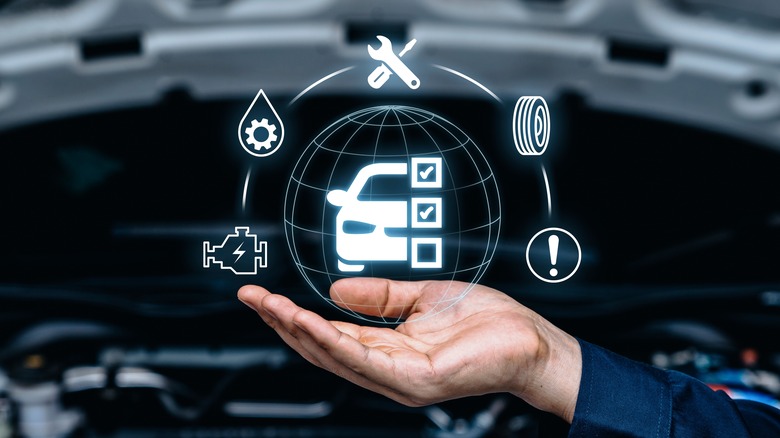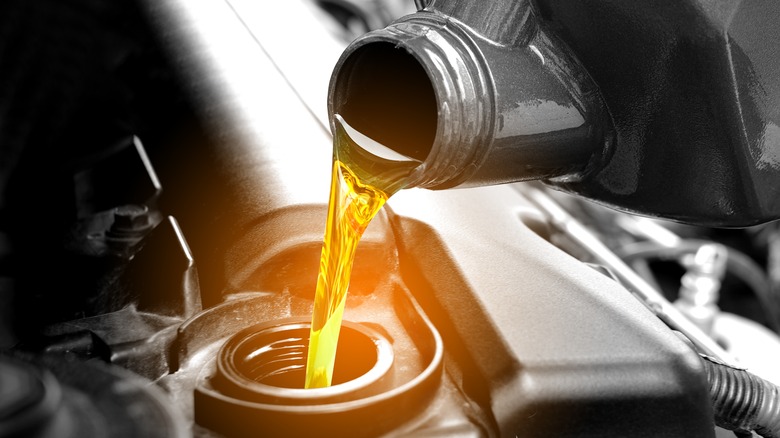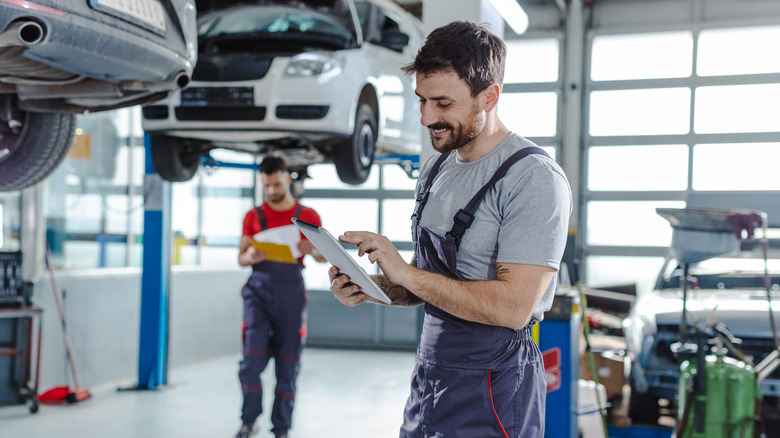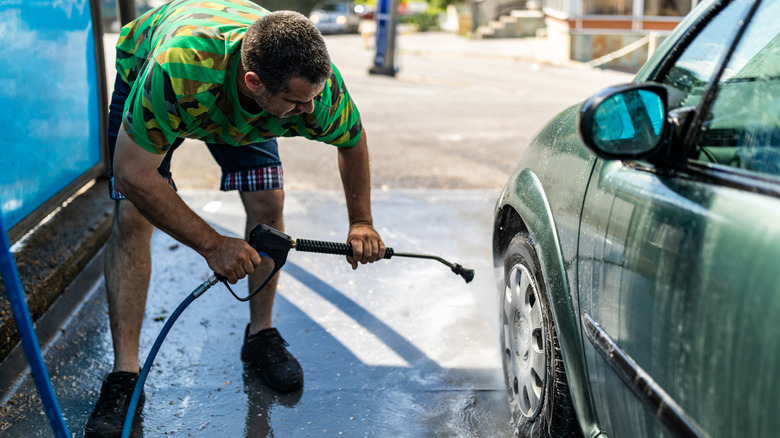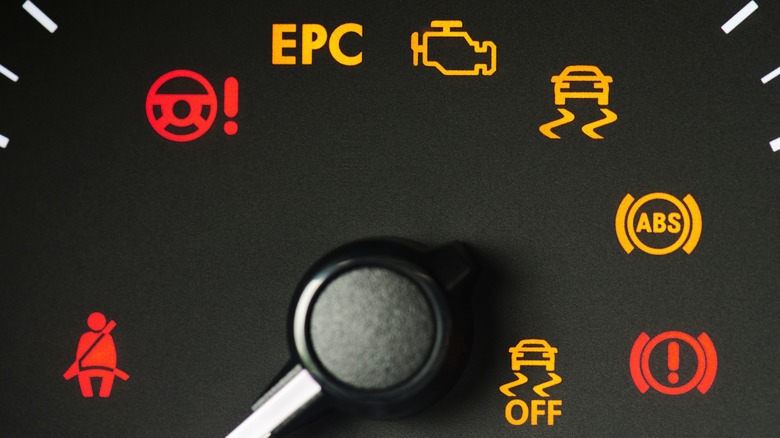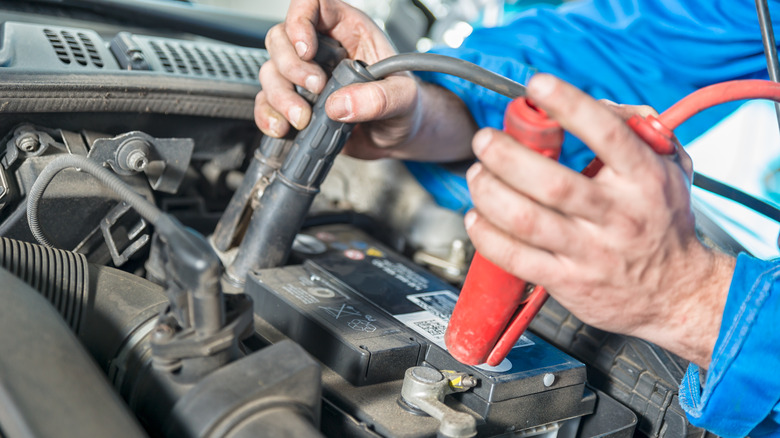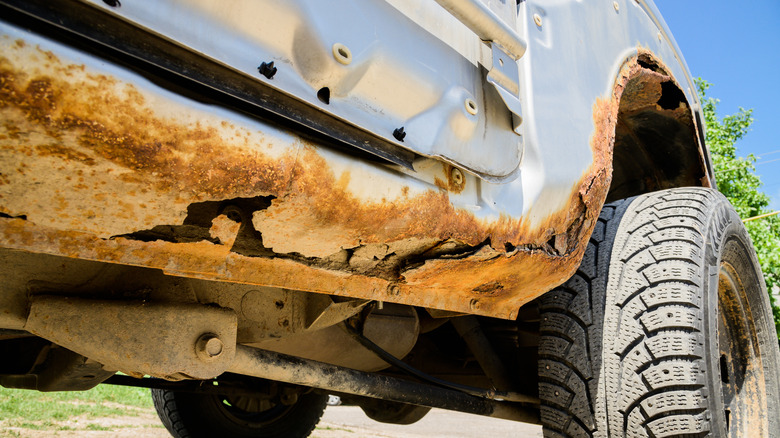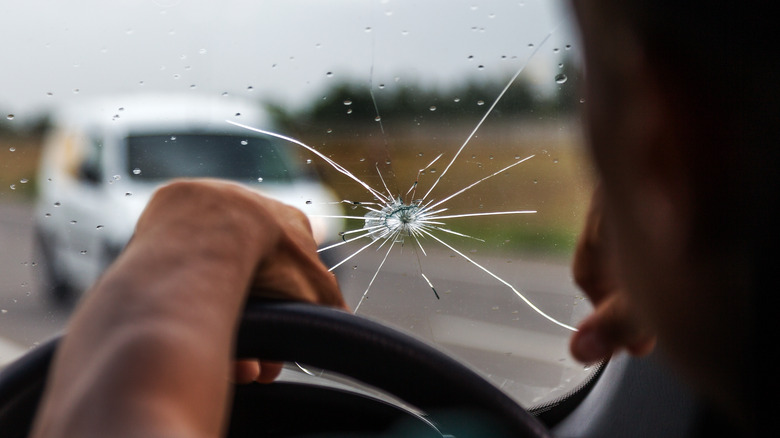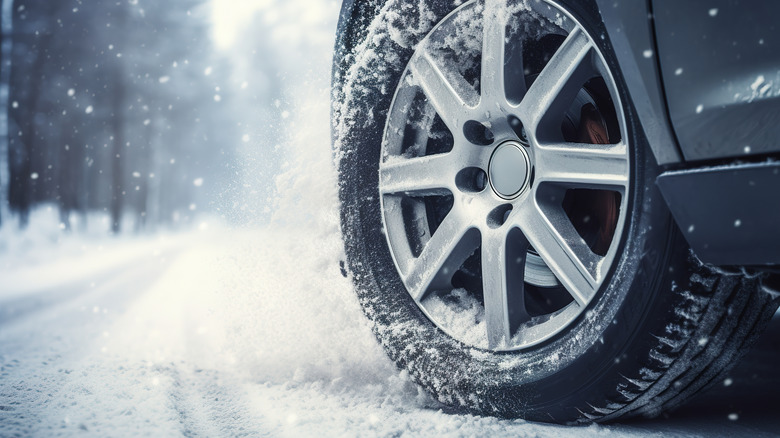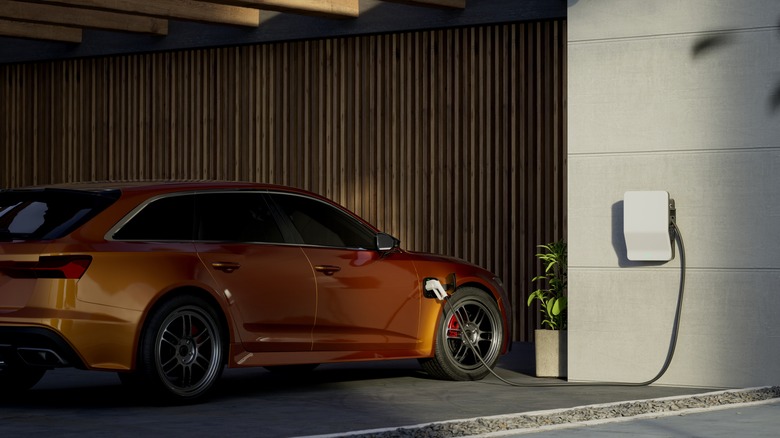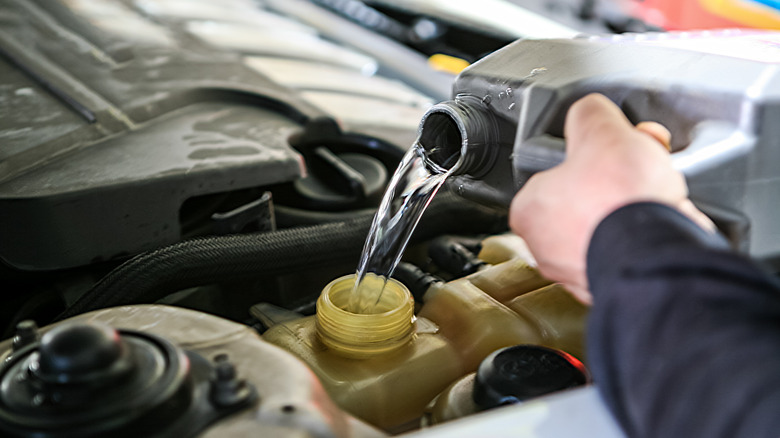10 Common Maintenance Mistakes That Will Make Your Car Less Reliable
When it comes to owning a car, the list of expenses can seem never-ending — as well as monthly payments, there's fuel, taxes, insurance and more that all add to the overall bill. It can be easy to overlook maintenance, especially for drivers who are strapped for time, cash, or both, but skipping out on keeping your car in top condition can end up costing more in the long run.
Even with the best intentions, it can be all too easy to overlook one key aspect of car maintenance, especially if it seems like a minor job at first glance. To keep a car as reliable as possible, however, there's really no other option but to keep on top of your car's routine needs. We've put together a quick checklist of the most common maintenance mistakes that can affect a car's reliability over time, so you can avoid making any of them.
Forgetting to change the oil
One of the most common maintenance mistakes car owners make is not changing their oil frequently enough. There are a number of reasons why regular oil changes are important, but in terms of reliability, the most important thing is to ensure that the oil can clean residue and debris from the engine. When the oil is fresh, it'll be most effective at keeping the engine's internals clean, but if it's not changed, it will reach a point where it's too dirty to do its job.
When it's consistently left for long periods of time, this can cause buildups of residue in the engine, which can affect the engine's performance. In milder cases, this can result in reduced fuel economy and increased emissions, but in severe cases, it can potentially cause damage to the engine's components. Regular servicing is a great way to ensure your car's oil is replaced within the manufacturer's recommended time period, but it's also worth periodically checking older cars for any signs of leaking oil and, if needed, topping the oil up accordingly.
Not following the service schedule
Every car will have a unique service schedule, and it's always best to stick to that schedule as closely as possible. Most drivers will prefer to take their car to a shop to have it serviced, but a minority of owners prefer to carry out servicing themselves. The latter is fine too — as long as you know exactly what needs to be inspected and how to replace components if necessary. For most drivers, the main thing they'll need to worry about is choosing the right service when they take it to the shop.
An interim service is the briefest checkup, with the only things usually replaced being the oil filter and the oil itself. It's mostly only necessary for drivers who do higher mileage or otherwise need their oil changed more frequently than average. A full or annual service will involve a more comprehensive inspection, and will potentially involve replacing things like the coolant and air filter as needed. A major service is usually required once every two years, and can involve replacing things like spark plugs and fuel filters.
Not washing your car regularly enough
As well as looking after your car's innards, it's also best to take proper care of its exterior too. Washing your car on a regular basis helps prevent the buildup of dirt and salt, the latter of which can contribute to premature rusting if it's left on the car for too long. Neglecting the car's rubber seals can also cause problems: dirty or damaged rubber seals can crack or become moldy, which can leave them unable to fully seal doors and windows.
Over time, these damaged seals can let in moisture from outside the car, which can lead to interior fogging or, in extreme cases, water damage to the car's upholstery or electrics. Aside from the potential for costly damage or rust, leaving a car unwashed can also be a safety issue. Most modern cars use a litany of sensors or cameras to provide intelligent safety assists, and if these sensors and cameras are blocked by dirt, they might not function properly.
Ignoring warning lights
One of our top tips for all car owners is to be aware of exactly what the lights on your dashboard mean. Some function more as advisory warnings, while some are indicators that something is seriously wrong with your car that requires urgent attention. Knowing what your car is telling you is the first step, but even if a warning light comes on that seems like a minor issue, it's always worth getting it checked out by a professional. Some common warning lights — like the check engine light and battery warning light — can mean a wide variety of things.
How easy it is to work out the exact problem varies by car make and model. Some cars flash up a message on the infotainment screen with a description of what's wrong, whereas other cars might require an OBD-II reader to diagnose the fault. If in any doubt, it's always best to get the car checked out, as not doing so can result in getting stranded at the side of the road in the worst cases. If you're not already clued up on dashboard lights, we've put together a roundup of five of the most important symbols you should know.
Being unaware of how to spot a low battery
While, in most cases, a warning light on the dashboard should alert you to the fact that your car has a low battery, it's not a foolproof way of ensuring your battery is in good health. There are a number of other warning signs that can indicate a car battery is nearing the end of its life, and they're worth watching out for. The most obvious sign is that the car is difficult to start, or takes longer than usual to fire up. This can often be the earliest sign that appears, even preceding the dashboard warning light.
Be careful, though: If the car does start but takes much longer than usual, it may only have enough juice for a couple more starts until it dies altogether. You may also notice that, while driving, the car's electrics start malfunctioning. As soon as you notice either of those things happening, it's advisable to take the car for a battery replacement as soon as possible. It can be inconvenient, but ignore it and there's a chance you'll be stranded at the side of the road.
Not keeping an eye out for rust
Especially for owners in colder climates where salted roads are a daily occurrence, rust is an inevitable part of a car's aging process. However, there are a few things that can be done to protect the car from being as badly affected by rust, as well as treatments that can prevent the spread of any spots that do crop up. To be most effective, however, you'll need to catch any signs of rust early.
Keep an eye out for bubbling paintwork, which is a key indicator that rust is starting to form in the body panel, or instances where a chip or scratch leaves exposed metal. In more serious cases, water in the interior can mean rust has damaged less readily visible parts of the car, like the floorpan.
More minor instances of rust can be repairable, but more serious patches might require an entire part or panel to be replaced. Using a wax sealant is a good way to add an extra layer of protection to the car, especially for drivers who cover significant mileage on salted roads. Whether your car is yet to show signs of rust or is already affected, conducting regular visual checks to catch spots early is the key to keeping them under control.
Putting off small repairs
It's not just rust that can cause damage if left unattended — almost any small piece of damage has the potential to cause a headache later down the line if it's ignored. A study in the UK found that more than a third of younger drivers put off small repairs in a bid to reduce their car's running costs, with reducing maintenance being the most popular way to save money. Doing so is a gamble, especially for older cars, with damage potentially adding extra stress to components that were already nearing the end of their lifespan.
In particular, the report highlighted replacing brake discs and fixing oil leaks as two of the most popular repairs to put off until a later date. The former is potentially very dangerous — ineffective brakes can endanger not only the occupants of the offending car but also anyone on the road around them — while the latter can result in critically low oil levels. Over time, this can lead to reduced engine reliability, with premature wear on the engine's internals shortening their lifespan.
Forgetting to check your tires
There are several things to keep in mind when checking your tires. The first is the easiest to spot: Check for any bulges appearing in the tire, which could indicate that the tire has been damaged. There are a variety of ways this can happen, from hitting a pothole to clipping a curb, but if you spot one, it's strongly advisable not to drive the car until it's fixed. In most cases, this is as simple as fitting your car's spare tire, but if you don't have one, then you'll need to call a professional to get the tire replaced.
While it's less immediately dangerous, it's also important to regularly check the pressure of your tires to ensure they're in line with manufacturer guidelines. It's best to check the tires before driving the car, as driving for any distance can cause the tires to warm, expanding the air inside and giving an inaccurate pressure reading. If you have a spare wheel, be sure to check that too, as it can be easy to forget about. If they're not at the right pressure, tires can wear faster and more unevenly, and they can also potentially be less effective at gripping the road.
Not using a hybrid car's battery
Many modern cars come with hybrid systems, and while they're no more complicated to look after than gas-only vehicles, there are a few powertrain-specific checks that drivers should carry out to ensure they're kept in top condition. Primarily, the best way to ensure a hybrid system is working is to regularly turn it on so it can charge. Exact requirements will vary by manufacturer, but Toyota recommends putting its cars into "Ready" mode for around an hour once a week if the car isn't otherwise being used.
This gives the hybrid battery a chance to charge if needed, with the gas engine automatically turning itself on to recharge the battery if needed. The charging process will also vary depending upon whether the car is a mild hybrid or a PHEV, and if it's the former, the car should only be turned on in a properly ventilated space to prevent the buildup of fumes while the engine is running. Ideally, this should be outdoors, but if you store your car in the garage for long periods of time, be sure to open a door before starting the hybrid recharging procedure.
Not checking coolant levels
Most modern cars shouldn't need their engine coolant replaced outside of regular servicing, but keeping an eye on coolant levels as a precaution can ensure drivers aren't subject to any costly repair bills if there's a leak. The process of checking the engine coolant is a fairly straightforward one: Simply locate the expansion tank in the engine bay and check that the level of the coolant is between the "min" and "max" lines. If it is, there's no need to do anything else — although a quick check of the hoses attached to the tank should ensure extra peace of mind. If they're leaking or stained, it's best to get them replaced.
It's worth noting that most cars will have a dashboard warning light to alert drivers to low coolant levels anyway — which is why knowing what each light means, as mentioned above, is important. If the coolant level is too low, you can either take it to a shop to get it topped up or refill the coolant yourself. If you opt to do it yourself, be sure to follow manufacturer guidelines for the type of coolant you'll need, as well as making sure that the engine is fully cooled before opening the expansion tank cap.
